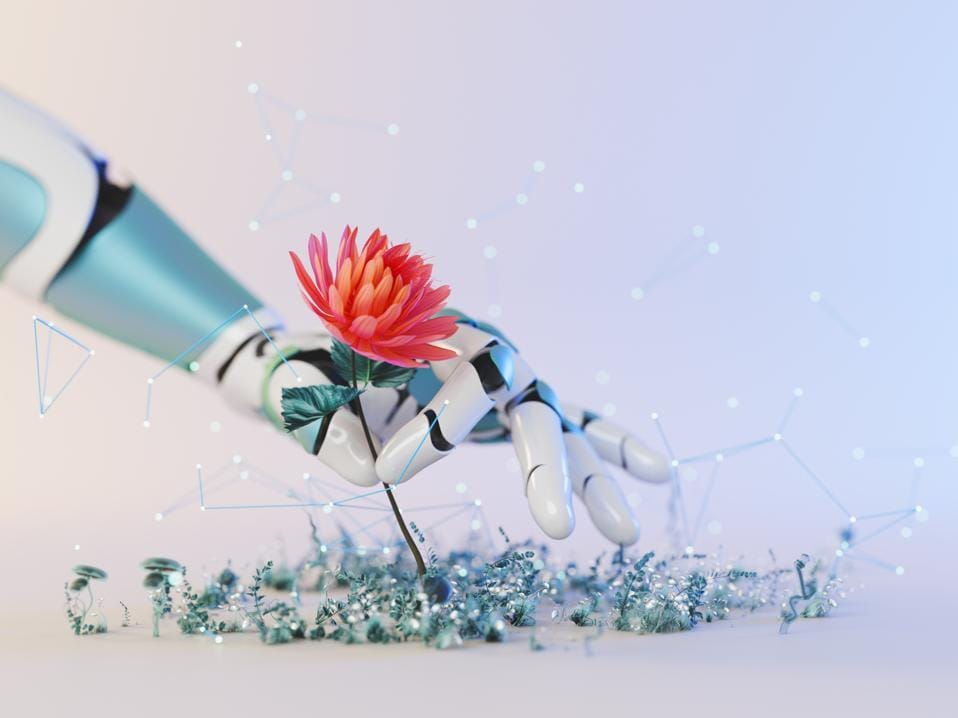DeepMind’s SELF-DISCOVER reasoning framework and MIT’s Neural Jacobian Fields (NJF) aren’t just incremental upgrades; together they hint at autonomous systems that understand why they reason and how they move. Below is your crash course on the synergy no one’s talking about—yet.

emergence of robot self-awareness and AI vision capabilities
Part 1: The Brain That Teaches Itself (SELF-DISCOVER)
In simple terms, SELF-DISCOVER is a new technique that teaches AI models how to create their own custom "how-to" guides for solving complex problems.
Imagine giving an AI a toolbox filled with basic skills: a "logic" screwdriver, a "math" hammer, or a "fact-checking" wrench.
The Old Way (Chain-of-Thought): You'd tell the AI, "Build this chair, just think step-by-step." It might figure it out, but it would be slow and inefficient.
The New Way (SELF-DISCOVER): The AI first looks at the chair and thinks, "Okay, to build this specific chair, I need a plan." It then automatically writes its own step-by-step guide by picking the right tools from its toolbox in the perfect order.
Why it matters
See-Through Thinking: The AI's plans are stored in a clear, structured way, so you can replay every step of its "thinking" process for auditing and debugging.
A Major Cut in Your Cloud Bill: This method is incredibly efficient, needing 10-40x less compute. Fewer calls to the AI means lower costs—a decisive edge for startups.
Future-Proof Your AI: New skills (like "use an external tool") can be dropped in like Lego bricks, making it easy to upgrade your AI's capabilities over time.

Part 2: The Body That Understands Itself (Neural Jacobian Fields)
So, the brain can teach itself. But what about the body?
Meet Neural Jacobian Fields (NJF). This technology skips the need for expensive sensors or hand-coded physics simulators. You just let a robot wiggle around for a couple of hours while cameras watch. From that video alone, an AI learns the robot's 3D shape and creates a perfect internal map of how its motors translate into movement.
It works on soft hands, rigid claws, and even a cheap $220 3D-printed arm—all controlled by a single camera. No complex setup, no re-tuning after wear-and-tear. Just look, learn, and move.

Under-reported gems
It Grasps the 'Ungraspable': NJF allowed a soft, inflatable robot hand—something with no conventional joints—to successfully grasp objects.
It Can Learn From a Smartphone: Researchers proved that training is feasible using simple smartphone video, slashing setup costs for new robots.
It Creates a Perfect 'Digital Twin': The AI learns the hardware so well that it can create a perfect simulator. Instead of building endless physical prototypes, engineers can test and perfect new robot designs virtually, saving massive amounts of time and money.
Where the Magic Meets
So, what happens when a brain that can teach itself gets a body that understands itself? You get a powerful feedback loop.
Here's how the two systems work together:
The Brain (SELF-DISCOVER): Drafts a high-level plan to solve a problem, like "pick up the red ball."
The Body (NJF): Executes the physical action, controlling the robot arm to move towards the ball.
The Loop: The body sends real-world feedback to the brain ("I touched the ball"), which then refines its plan. This closes the gap between thought and action.
📊 Proof in Numbers

Self-Discover lifts GPT-4 accuracy, especially on grounded agent reasoning (T4D)
SELF-DISCOVER’s gains explode on grounded-agent tasks (T4D), the very domain where robots operate. Pair that with NJF’s sensor-free dexterity and you get systems that plan better because they move better, and move better because they plan better.
Quick Hits & What’s Next
💰 The New IP: Compute budgets are the new intellectual property. Expect cloud-optimised SELF-DISCOVER APIs to become available soon.
✅ Ready for Regulation: The transparent "thinking" plans from SELF-DISCOVER could automatically satisfy upcoming AI audit requirements.
🤖 The DIY Revolution: Open-source NJF code already runs on Raspberry Pi-level hardware, meaning hobbyists can build their own self-learning robot arms.
frontiers: The next step is combining these systems with feedback loops that allow for recursive self-improvement—but ensuring they stay aligned with human goals is critical.
Stay tuned. You heard it here first! 😉
